By Romelo Rodriguez, CPT, MAT, RTS, HLC
Originally published by Oral Health Group, reposted with permission.
The dental profession is one that can wreak havoc on your back and cause postural issues if not addressed with appropriate exercises. For all of my clients working in this profession, I begin by talking to them about what their set-up is like when treating a patient. I find it is usually a similar set-up from dentist-to-dentist, where they are on a stool with wheels (often with no back support) with their spine bent over and slightly twisted to one side, and their shoulders rolled in.
To first create a more ergonomically correct set-up, I would recommend considering a dental chair with back support for times where you are talking to the patient or filling out paperwork. You will want to make it a habit to sit tall in your chair, as if a string is lightly pulling your head closer to the ceiling. Your ear lobes should be stacked over your shoulders and your shoulders stacked over your hips. This position reduces stress on the lower back and shoulders, which are otherwise under constant stress from being rounded.
The position dentists are in when they are treating the patient can be countered by doing these exercises and stretches every day in your office or home.
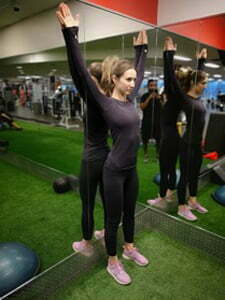
Fig. 1A: A demonstration of a wall slide.
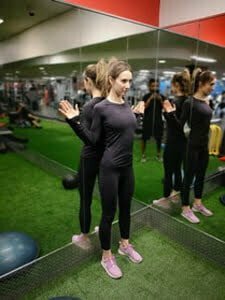
Fig. 1B: A demonstration of a wall slide.
Wall Slides
In order to correct poor posture where you are leaned over in your chair and rounded inward from the shoulders, strengthening the posterior chain muscles to help counter this position is crucial.Stand with your back against a wall. Keep your heels, glutes, shoulders and the back of your head as close to the wall as possible. While keeping your abs slightly contracted and your shoulder blades retracted back and down (squeeze your shoulder blades together and maintain the squeeze throughout the entire movement), place the back of your upper arms, forearms and hands over your head and on the wall (Fig. 1A). While keeping those three points in contact with the wall try to slide the three points down and bring your elbows into your sides as shown in Fig. 1B. Now repeat by sliding your hands up the wall and keeping the three points as close to the mirror as possible. Move slowly up and down the wall and try to repeat 10 times, twice a day.
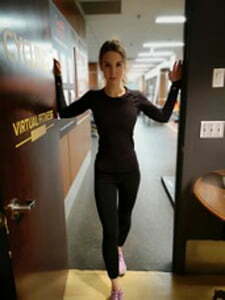
Fig. 2: Demonstration of a chest stretch exercise.
Chest Stretch
The anterior muscles of the shoulder can get very tight from being rounded inward all day long. To counter this tightness we need to stretch these muscles.
While standing in a doorway, place one foot forward and bring your arms up to place the inside of your forearms, and your palms against the sides of the doorway. Your elbows should be at about a 90-degree angle and your upper arms parallel to the floor. Slowly bring your chest forward until you feel a light stretch in the front of your chest and the front of your shoulders (Fig. 2). Hold the light stretch for 30 seconds, twice a day.
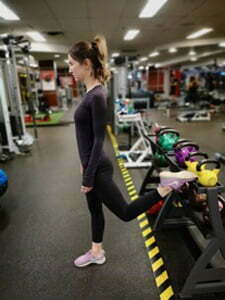
Fig. 3: Demonstration of a hip flexor exercise.
Hip Flexor Stretch
The hip flexors are a group of muscles found in the front of your hips. The hip flexors help to bring your knee forward and upward. Sitting in a dental chair for long periods of time cause these muscles to tighten. We can counter this tightness by stretching these muscles as shown (Fig. 3).
While standing with your face away from a stable object that is approximately the height of the bottom of your glute. Bend your knee and reach back to place the top of your left foot on the object while keeping your knees in toward the body as oppose to flared out wide from each other. Continue to move your right foot forward so it is slightly ahead. Stand tall and add a slight lean back while contracting your left glute. You should feel a light stretch in the front of your left hip. Hold the stretch for 30 seconds twice a day and repeat on the right side. Remember not to overstretch it. You are only leaning back slightly and doing a light glute contraction to help the stretch.
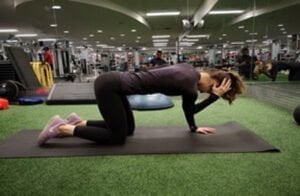
Fig. 4A: A demonstration of the inward rotation position of a thoracic extension.
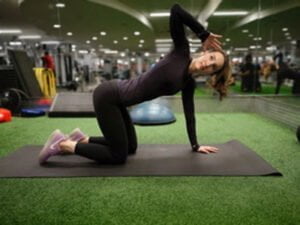
Fig. 4B: A demonstration of the full extension position of a thoracic extension.
Thoracic Extensions
Bending forward when treating patients can contribute to poor posture throughout the spine by over lengthening and weakening this area. When this happens, our spine becomes rounded and appears to be hunched over. Doing thoracic extensions will help to keep an upright posture and keep the middle portion of the spine nice and strong.
Begin by placing your hands and knees on the floor. In this four-point position on the floor keep your left palm down to the floor directly under your left shoulder. Your knees should be bent on the floor at a 90-degree angle. Your hips should be stacked right on top of your knees. Place your right palm on the back of your head and aim your right elbow to rotate inward, bringing it as close to your left elbow as possible (Fig. 4A). Once you get as close to your left elbow or even touch it, open up your spine by rotating your right elbow away from your left elbow. Extend the right elbow to the end of your range and squeeze your shoulder blades together behind you (Fig. 4B). Then rotate your right elbow back into the left elbow. Thoracic extensions should be repeated 10 times on each side.
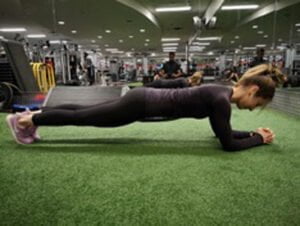
Fig. 5: A demonstration of a plank.
Plank
Lower back problems are very common in dentistry. This is often the result of a weak core, which can stem from one’s position on the dental chair.
A plank is a great test of core strength. Start by placing your feet on the floor and your elbows directly under your shoulders. Then lift your knees, hips and chest off the ground. You want to be in a straight line from your ankles to your head (Fig. 5). Once in this position it is important to maintain constant breathing and try to last if you can before your body starts to shake. A goal you may consider for a plank exercise is to start by doing it for 30 seconds and then working up to two minutes.
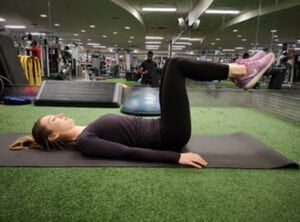
Fig. 6A: The starting position of a double knee raise.
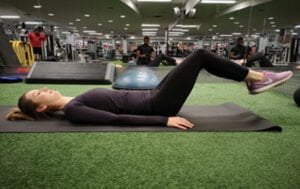
Fig. 6B: The end position of a double knee raise.
Double Knee Raise
Another exercise to help strengthen a weakened core is the double knee raise. Often people go straight into a straight leg raise which is too much for what they need in the beginning and can be far too intense on your spine. I recommend starting with a bent knee position.
Start by laying on your back with your hands to your sides. Bring your thighs up so that your hips are at a 90-degree angle. Now bend your knees so that they are also at a 90-degree angle (Fig. 6A). This is your start position. From here, maintain your 90-degree knee position and slowly lower your hips until your thighs reach a 45-degree angle (Fig. 6B). Try not to go lower than this at first as your lower back will start to arch and peel off the floor. You only want to lower your legs as far as you can to ensure that your lower spine remains on the floor. Try this for two sets of 10 repetitions and then work up to 15 repetitions.
By staying consistent with these exercises, you can maintain a good posture and strengthen your abdominal muscles to help avoid discomfort from the lower back.
________________________________________
About the Author:
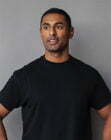
Romelo Rodriguez
Romelo Rodriguez is a personal trainer in Toronto, Ontario. He is an honours graduate of the Fitness & Lifestyle Management program at George Brown College in Toronto. In his 12 years in the industry, he has worked as a personal trainer and fitness coach to some of Canada’s top professionals, including dentists. He has worked in some of Canada’s most elite clubs, including the Granite Club and the Toronto Athletic Club. Romelo has a broad range of fitness expertise including working as a strength coach and weight loss coach, and continues to work alongside physiotherapists and chiropractors in rehabilitating patients and athletes. Currently Romelo works out of the Granite Club and has an in-home and online personal training business based out of Toronto. The author can be contacted through www.romelorodriguez.com.
Reprinted with permission from Oral Health Group.
Follow the Oral Health Group on Facebook, Instagram, Twitter and LinkedIn for the latest updates on news, clinical articles, practice management and more.

